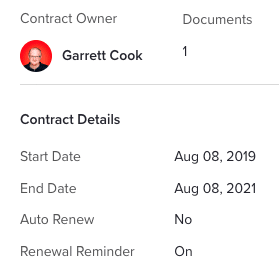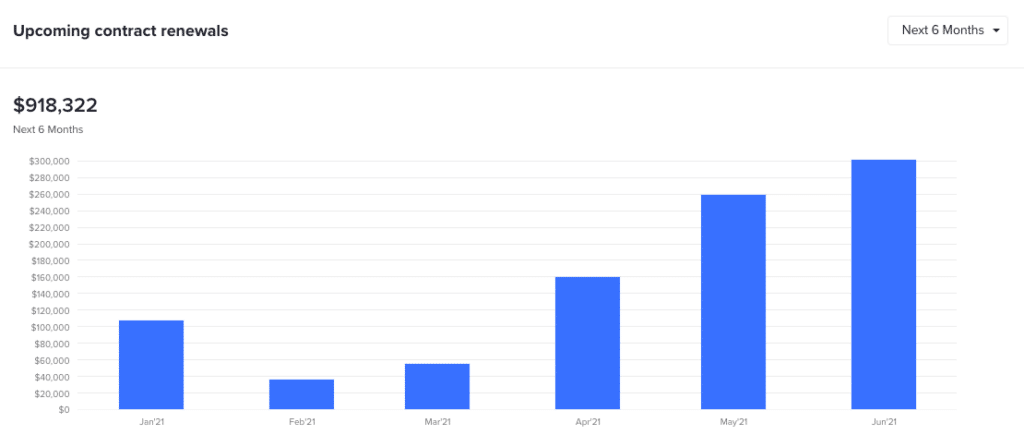Vendor negotiation strategies: Renew contracts like a pro

Contract negotiations are like salsa, it takes two to tango.
Be it renewals or new contracts, there must be collaboration and coordination between both parties to reach a mutually beneficial agreement. And for the odds to be in your favor, you must be skilled in negotiating contracts with vendors.
Effective vendor negotiations prioritize collaboration over coercion. It should create a win-win scenario that leads to a sustainable and positive business partnership.
Data is your ally! Leveraging a SaaS management tool like BetterCloud is a great solution for finding insights to strengthen your contract negotiation strategy. However, there’s more to it.
Before diving into your upcoming contract renewal meetings, you need to know the ins and outs of vendor negotiation strategies, data to back you up, contract details to look out for, and the mistakes to avoid.
Let’s dive in!
Preparation before vendor negotiation
The preparation phase is a critical part of vendor contract negotiations as it sets you up for success by ensuring that your team enters the contract renewaldiscussion on a strong foot.
Conduct research
The first step to creating a favorable vendor negotiation strategy is to know everything about the current market and your vendor’s position in it.
- Understand market rates and trends for the goods or services you are seeking to renew from the vendor. Make sure to evaluate and compare the current industry standards, average costs, and price ranges with the original terms.
- Assess the vendor’s market position, including their market share, reputation, and the demand level for their services and products. Also, examine their current financial stability and past performance.
Reassess business objectives and requirements
During software renewal time, it’s important to not only reflect on the contract’s performance and how your business needs have evolved, but also to assess your license count. Businesses often find their license count is either too high or too low when renewal comes around.
Basically, see if the software is still worth it and if you need to adjust anything, including the number of licenses.
Check your budgetary limits
Conduct a financial assessment to understand your budget limitations. Check for key metrics like ROI expectations, cost-saving targets, and budget allocation for vendor relationships. Reconsider the budget based on the value delivered by the vendor and also look for any financial changes within your business.
Negotiating renewal contracts with vendors: Things to check
Once you’re prepped for your contract negotiation, check and catch up on specific contract details with your team ahead of the vendor negotiation meeting.
- Renewal date: Is the software contract set to renew next week, month, or quarter? It’s crucial that your team keeps an eye on the renewal dates for all of your software solutions.
- Cancellation period: This is the period of time that you’re allowed to cancel or make adjustments to the contract. This is important because while some contracts require a 30-day notice, some require 90 days.
- Contract owner: Figure out who within your organization is the contract owner so they can be a part of the conversation and decision process for either renewing, canceling, or adjusting the current terms.
- Auto-renewal: Sometimes, contracts that renew automatically can take you by surprise. Be sure to double-check if the clause states whether or not a tool auto-renews, as well as the term length of the auto-renewal. For instance, if you sign a 3-year contract, will it auto-renew for one year or another three years?
- Employee sentiment: Do you know for sure how your team feels about using a certain application? When you utilize user sentiment data, you can pinpoint if they don’t enjoy using a specific software tool. This allows you to capture the necessary feedback needed to show the vendor where they aren’t delivering and can make it easier to negotiate a lower price.
- Utilization: Does your team actually use the software you’re paying for? When you take a look at utilization, you can see which tools are being used every day, and which applications are going months without anyone logging in.
- Multiple contracts with the same vendor: If your organization is paying for more than one software solution from the same vendor, consider finding out if you can consolidate for better pricing before resigning for one or all of these products.
- Visibility into overlap: It’s common for businesses to be paying for various SaaS tools used by different departments that do the same thing. When you know where there’s feature overlap, you can decommission one of the tools and decide not to renew to save money.
- Benchmarking data: How can you truly know if your team is getting a good deal on the software you’re using? When you have access to benchmarking data, you can see how the price of your contract stacks up against similar companies within your industry.
- Fiscal year-end date: Consider timing contract talks closer to a vendor’s fiscal year-end. Companies pressured to close deals by then may be more receptive to discounts.
Key components in a SaaS contract
When you take a deep dive into the clauses of a SaaS contract, there are certain details that people tend to miss.
Price adjustment
Always take the time to note any contractual language that references the price and whether or not it can be increased as time passes. Find out if the price can be increased and if there’s a range of an acceptable increase. This clause is often hidden toward the end of a contract, so be sure your team pays special attention to the context surrounding price increases.
Contract term and renewal
You should also make sure your team takes the time to look at the renewal length term. It’s common for many teams to assume the renewal term is only for one year, regardless of how long you signed the initial agreement. If you sign for a three-year term, it may renew for three more years instead of one. If this detail goes missed, you could be stuck using a tool for longer than you’d like.
Pricing incentives
Another contract detail that gets forgotten during negotiation is whether or not your team can get a better price if you sign for a longer term. Negotiating price is all part of the process, so don’t forget to ask before signing.
Software updates access
Finally, you don’t want to miss out on the opportunity to get access to the newest versions of the software you’re paying for. Tools within your tech stack may renew on their own, but not for the latest and greatest versions. If there’s a newer version of an on-premise application that your team is using, see if it’ll be automatically part of your stack or if you’ll need to pay an extra fee for it.
Aside from proofreading, be sure that you’re going over every pertinent information in your contracts. Keep an eye out for these details ahead of the negotiating process so nothing slips through the cracks.
Mistakes to avoid when negotiating vendor contracts
In addition to SaaS contract claws and components, there are other mistakes that are often made during the process of negotiating contracts with vendors.
Consider what it means to be a smart negotiator. A smart negotiator will always ask for multiple options – especially when it comes to the price. When negotiating, it’s common to want more insights regarding price, and you may ask for pricing ranges for one year, three years, and five years.
Depending on how much the vendor reveals during this conversation, you may be able to get a better sense of their pricing floors. When you have this information, you know what you can try to negotiate down to.
Additionally, it’s often a mistake not to ask about add-ons within your contract. For instance, let’s say your team is interested in Software X, which is listed as $5 a user. The vendor said that if you buy 1,000 licenses, you can instead have them for $2 a user.
What would happen if you call back in six months asking for more users? Will they be sold to you at $5 or $2? Because a volume discount is often not in the contract, be sure to ask about add-ons.
How to use BetterCloud for vendor negotiations
One of the great things about using a SaaS system of record like BetterCloud is that it simplifies all the data you need before going into a software negotiation.
In the easy-to-read dashboard, your team has every last detail you’ll need.

For instance, unsure when a contract is set to renew? Just click on one of your SaaS applications, and you can see the start and end date of each of your contacts. You’ll also see if it auto-renews on its own if you’ve switched the renewal reminder to “On” and who the owner of the contract is.
Want an overall view of your SaaS applications? BetterCloud can give you that, too, as it’s easy to see how many contracts you have scheduled to renew in the upcoming months.

To get down into the real details of how your team feels about each SaaS tool, there’s the sentiment hub. Once you send out the pulse survey, this dashboard will provide you with the Net Promoter Score of every application.

To put it simply, every last detail you need to be armed with walking into a software negotiation process awaits within BetterCloud. Without this data, you could wind up overspending and with far too many licenses than your team will ever use.
Every clause matters
Make your contract renewals effective by elevating your negotiation skills.
BetterCloud empowers you to negotiate software contracts with confidence and optimize your spend management, ensuring effective renewals. You’ll be prepared with the necessary data to make informed decisions, avoid overspending, and achieve the best possible terms for your business.
Ready to be fully prepared ahead of your vendor negotiations? Our team is happy to show you how BetterCloud can be your ally in future negotiations.



